Description
Mechanistic Fatigue Analysis And Cost-Effectiveness Evaluation Of Asphalt Rubber Mixtures
Mena I. Souliman* – Hemant GC* – Lubinda F. Walubita**- Jorge Sousa ***
ABSTRACT: Traffic loading has been associated with causing fatigue cracking, which is one of the major distresses occurring in flexible asphalt pavement structures. This load-associated failure is caused due to the low tensile strength of hot-mix asphalt (HMA) under repeated traffic loading. One of the efficient solutions to prolong the fatigue life of asphaltic mixtures is to utilize flexible and additive materials such as rubber. Previous studies have shown improved mechanical performance of asphalt rubber mixtures, while very few studies have investigated the long-term mechanistic performance and the cost-effectiveness of the addition of rubber into asphalt mixtures.
A mechanistic analysis using 3D Move software package was performed to assess the long- term fatigue performance of two different mixtures, namely: conventional HMA and asphalt rubber (AR). Two different pavement construction scenarios were investigated: (1) a newly constructed pavement structure and (2) a rehabilitated overlay. Each mixture was run for two different vehicle speeds and two different pavement thicknesses that totaled sixteen different 3D Move mechanistic analysis scenarios (2 asphalt mixtures x 2 construction scenarios x 2 vehicle speeds x 2 pavement thicknesses). The maximum tensile strains at the bottom of the asphalt layer was captured for each scenario and a fatigue ratio that compared AR to a corresponding conventional HMA mixture scenario was calculated accordingly. In addition, a cost-effectiveness analysis was carried out for the same sixteen scenarios.
Overall, the mechanistic analysis showed that AR had around six times the fatigue life of a conventional HMA layer in the case of new construction, while the AR overlay had 40 times the fatigue life of a conventional HMA overlay. In the case of cost-effectiveness analysis, AR exhibited four times lower cost per 1000 fatigue life cycles compared to a conventional HMA in the case of new construction. For an overlay scenario, AR exhibited 23 times lower cost per 1000 fatigue life cycles compared to a conventional HMA overlay.

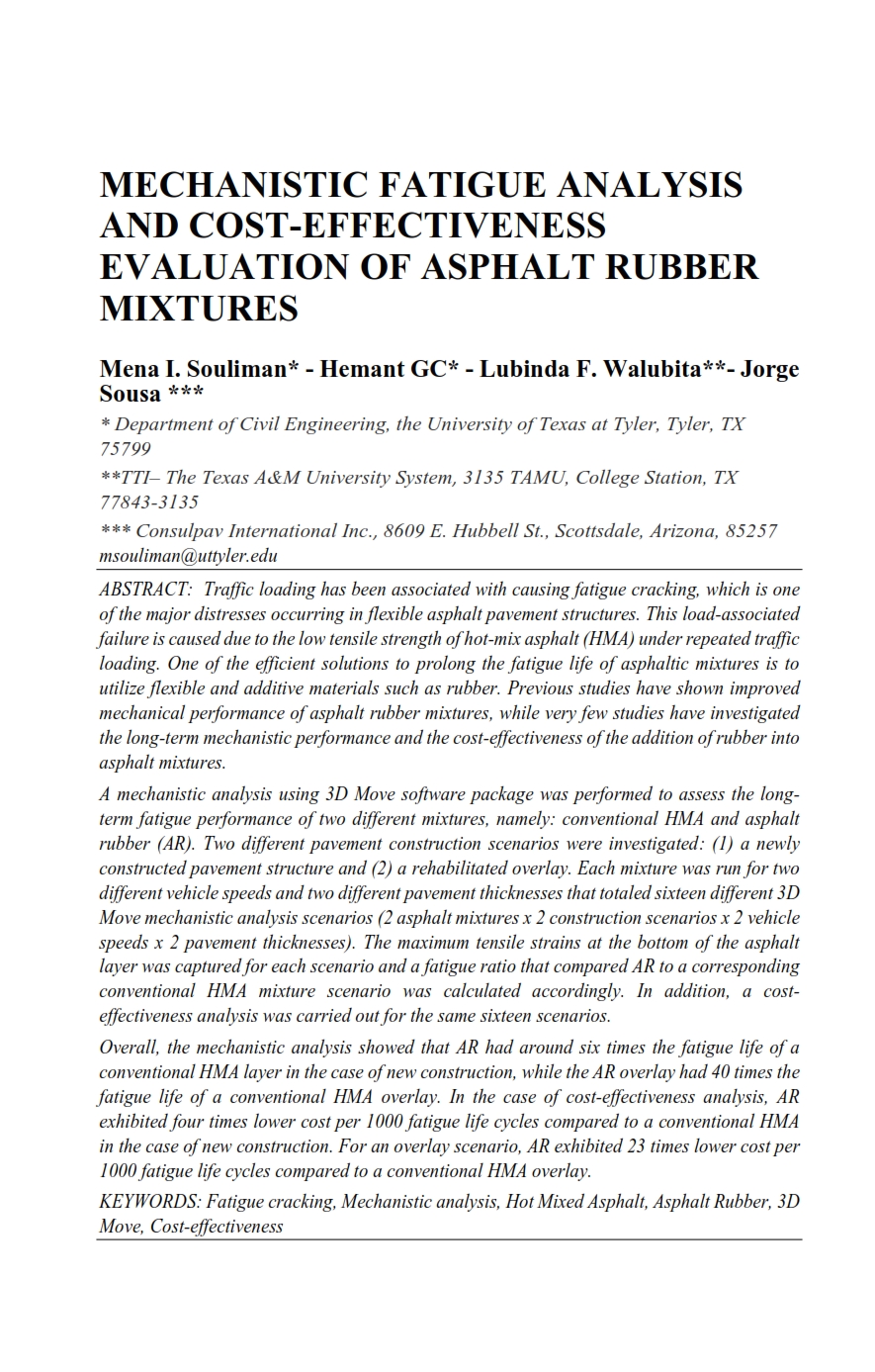
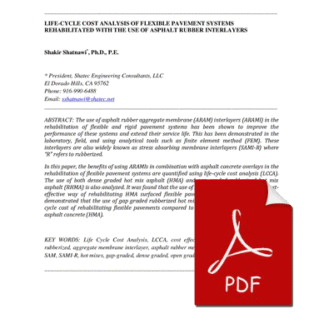
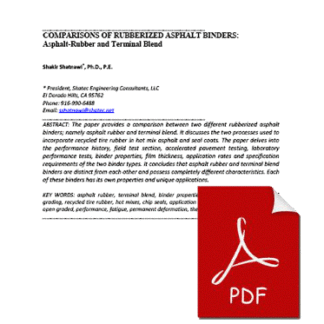
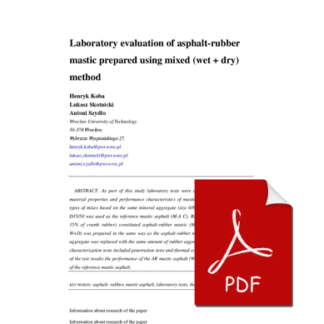


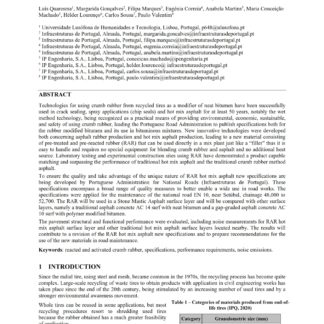
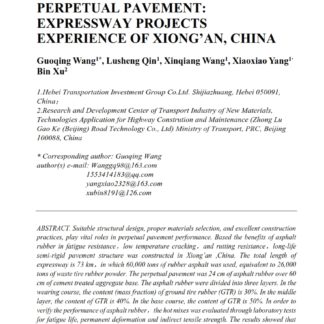
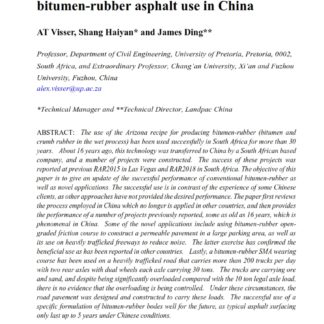
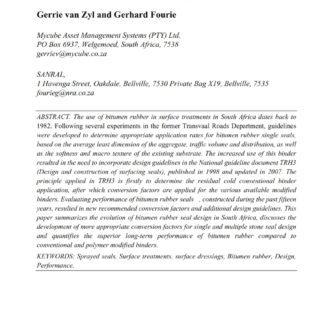
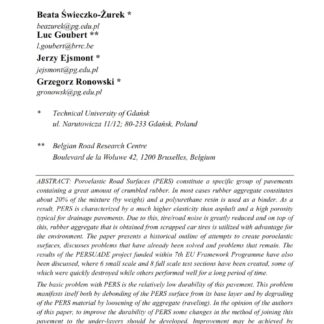
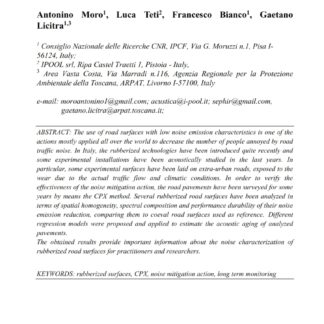
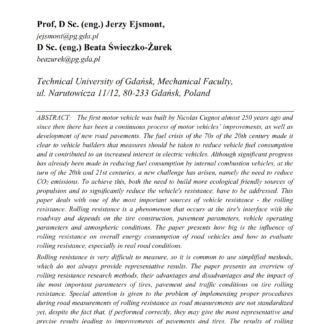
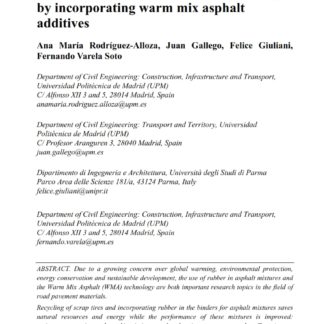
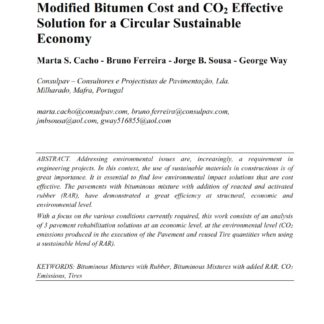
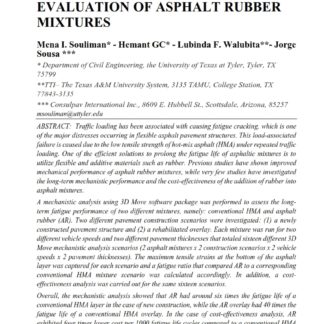
Reviews
There are no reviews yet.